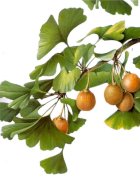June 17, 2003, republished from www.health24.co.za
 |
Often under-utilised traditional medicine, the only form of healthcare for millions of people, can save lives in rural areas and can diversify the choices of medical treatment in industrialised nations, doctors and academics said at a WHO-sponsored conference yesterday. |
“If we only promote Western medicine, we limit choices of effective (traditional) medical remedies that are less expensive than mainstream medications,” said Yuji Kawaguchi, director of the Kobe-based World Health Organisation (WHO) Centre for Health Development.
Obstacles to be cleared out of the way
“We must study what is effective and what is not. We have to increase the safety of those practices,” he said at the opening of the International Meeting on the Global Atlas of Traditional Medicine.
“But a big problem is that we do not know what is available and where.”
The three-day meeting, organised by the Kobe-based centre, has attracted 64 participants from about 32 nations, to map the global availability of traditional medicine to make it more accessible and to raise awareness of the treatment.
Atlas to be released next year
They hope to finish and publish the atlas of traditional medicine next year, said Kawaguchi.
The Kobe centre, which started the atlas project in 1999, hopes the two-volume reference book, which will contain 70 maps, will be used to improve healthcare systems, clinical research, training and the quality of traditional medicine around the world.
Though traditional medicine is used widely throughout the world, it is generally the primary source of medical care in poor nations, said Xiaorui Zhang, Geneva-based WHO coordinator of traditional medicine, essential drugs and medicines policy.
She said, by way of example, that nearly 90 percent of people in Ethiopia rely only on traditional medicine in part because of the lack of access to modern medicine.
And most people in China look to traditional treatments, such as acupuncture and herbs such as ginseng, said Pyong-Ui Roh, professor of health science at the Kyungsan University in South Korea.
Efficacy and safety should be primary concern
Policy makers must ensure such care is effective and safe, Roh said, adding that the atlas should raise awareness among political leaders of the need to set guidelines for the use of traditional medicine in their countries.
“Western and traditional medicine are two pillars supporting the whole medical system,” Roh said. “We need to learn and research more about it (traditional medicine).”
The controlled use of alternatives or complements to modern medicine can successfully treat illnesses, Zhang added.
In Ghana, Mali, Nigeria and Zambia, 60 percent of children with high fever, presumably due to malaria, are treated with various locally available herbal medications, she said.
For many patients, traditional medicine, such as herbal plants, can be mixed with modern treatments to achieve the best outcome for patients, researchers saidl
A tool for policy-making
It is important to make the atlas a tool for policy-making among healthcare officials around the world, said Gerard Bodeker, a medical researcher at the University of Oxford.
The atlas should help policy makers discern how dependent people in rural and poor areas are on traditional medicine, and hopefully, it will prompt them to take action to expand health insurance coverage to pay for traditional care, he said.
“Around the world, most people pay out of pocket for this,” he said of traditional care.
Traditional treatments are less expensive than modern medicine, but the cost can still be prohibitive for some, he said.
The atlas will also help preserve the traditional knowledge of medicine, which in some areas is not passed on to younger generations as modern medicine becomes available, Kawaguchi of the Kobe centre said.
The atlas will allow physicians and traditional healers to learn about one another and exchange information, Kawaguchi said. – (Sapa)

